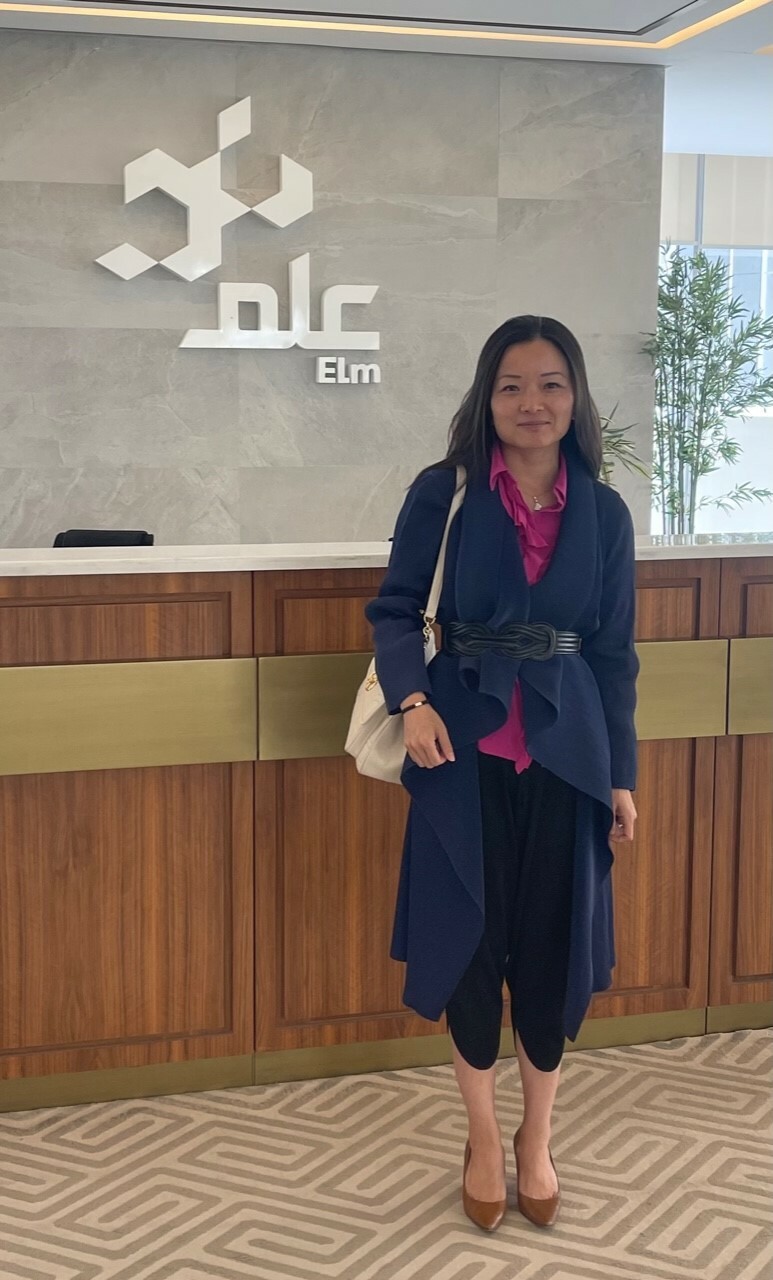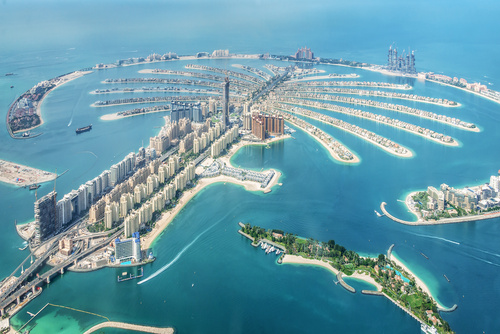In the month of May, we spent a week in the Middle East, visiting 5 cities (Riyadh, Jeddah, Abu Dhabi, Dubai, Doha) in 3 countries (Saudi Arabia, UAE and Qatar).
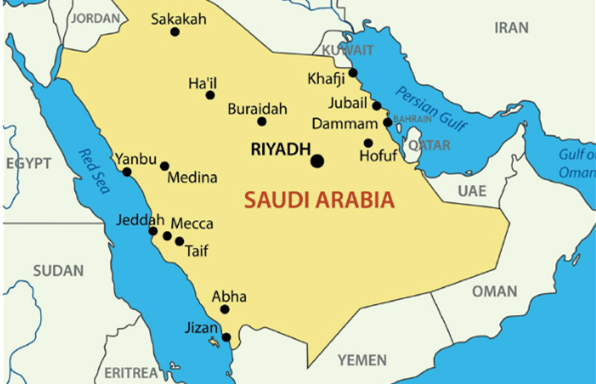 During our last trip to the region in Feb 2020, we were already excited about the long-term prospects in Saudi Arabia (cf. our travel report) as Crown Prince Mohammad Bin Salman Al Saud (MBS)’s large-scale social-economic reforms (Vision 2030) could shape the future of the country and open up structural opportunities such as the development of non-oil economies and private sectors, female labor force participation, etc... As such, we were eager to return to the region physically to feel the vibe on the ground. This time, we met more than 20 companies in various sectors: major banking groups including Saudi National Bank, Al Rajhi Bank, Qatar National Bank, Commercial Bank of Qatar, First Abu Dhabi Bank, Emirates NBD and Dubai Islamic Bank, UAE properties leaders such as Emaar and Adar Properties, consumer staple companies Almarai and Agthia, Saudi hospital operator AL Hammadi, car rental group
During our last trip to the region in Feb 2020, we were already excited about the long-term prospects in Saudi Arabia (cf. our travel report) as Crown Prince Mohammad Bin Salman Al Saud (MBS)’s large-scale social-economic reforms (Vision 2030) could shape the future of the country and open up structural opportunities such as the development of non-oil economies and private sectors, female labor force participation, etc... As such, we were eager to return to the region physically to feel the vibe on the ground. This time, we met more than 20 companies in various sectors: major banking groups including Saudi National Bank, Al Rajhi Bank, Qatar National Bank, Commercial Bank of Qatar, First Abu Dhabi Bank, Emirates NBD and Dubai Islamic Bank, UAE properties leaders such as Emaar and Adar Properties, consumer staple companies Almarai and Agthia, Saudi hospital operator AL Hammadi, car rental group Budget Saudi, Food delivery champion Jahez, IT company ELM, Basic material groups Industries Qatar and Saudi Arabian Mining Co (Maaden), retail companies Bindawood (supermarket) and ADNOC (gas station), Telcom operator Etisalat Group, Saudi Research & Media Group (SRMG) in the media sector, and low cost travel leader Air Arabia.
Budget Saudi, Food delivery champion Jahez, IT company ELM, Basic material groups Industries Qatar and Saudi Arabian Mining Co (Maaden), retail companies Bindawood (supermarket) and ADNOC (gas station), Telcom operator Etisalat Group, Saudi Research & Media Group (SRMG) in the media sector, and low cost travel leader Air Arabia.
Almost every company we spoke to shared optimism associated with strong macro outlook and more importantly, the reform agenda. Thanks to post-Covid reopening and the elevated energy prices, all three countries are clearly riding strong macro tailwinds. Their economies are expected to grow mid-to-high single digit in real term this year (7% for Saudi according to IMF), and their twin 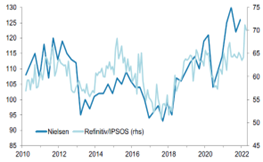 surpluses (current and fiscal accounts) could reach 25-30% of GDP. Compare to other EM peers, both inflationary pressure and political risks are low. On top of that, we felt the reforms have taken a front seat role in these countries. This is driven by both internal demand (to secure long-term growth and job creation) and increased intra-region competition for foreign investment. In Saudi Arabia, where Vision 2030 is gradually taking shape, government-sponsored investment projects ($100bn before including NEOM, a $500bn megaproject intends to build a high-tech hub from scratch) are creating exciting opportunities in energy (renewables), tourism & entertainment, mining, IT development and military industries. Public Investment Fund (PIF) has a mandate to invest at least $40bn pa till 2025. On the consumer front, the confidence is already at a 12-year high (in contrast to the rest of the world). It could be further boosted should the VAT rate (increased from 5% to 15% in July 2020) cut takes place once the FX reserves are replenished ($452bn now vs. a record high of $737bn in August 2014). In Qatar, macro fundamentals are also strong backed by high energy prices. The country will gain international visibility thanks to this year’s World Cup. Its LNG capacity expansion (increase 40% by 2026) seems timely because of the non-completion of Nord Stream 2 and the expected resilient demand for gas as the world progressively transitions to net zero. In UAE, where the weakness of Dubai property affected local economy on our last trip, we felt a sharp turnaround in sentiment. After a strong post-covid recovery and a successful Dubai expo, UAE visa reforms should contribute to population growth and demand for property both in Dubai and Abu Dhabi.
surpluses (current and fiscal accounts) could reach 25-30% of GDP. Compare to other EM peers, both inflationary pressure and political risks are low. On top of that, we felt the reforms have taken a front seat role in these countries. This is driven by both internal demand (to secure long-term growth and job creation) and increased intra-region competition for foreign investment. In Saudi Arabia, where Vision 2030 is gradually taking shape, government-sponsored investment projects ($100bn before including NEOM, a $500bn megaproject intends to build a high-tech hub from scratch) are creating exciting opportunities in energy (renewables), tourism & entertainment, mining, IT development and military industries. Public Investment Fund (PIF) has a mandate to invest at least $40bn pa till 2025. On the consumer front, the confidence is already at a 12-year high (in contrast to the rest of the world). It could be further boosted should the VAT rate (increased from 5% to 15% in July 2020) cut takes place once the FX reserves are replenished ($452bn now vs. a record high of $737bn in August 2014). In Qatar, macro fundamentals are also strong backed by high energy prices. The country will gain international visibility thanks to this year’s World Cup. Its LNG capacity expansion (increase 40% by 2026) seems timely because of the non-completion of Nord Stream 2 and the expected resilient demand for gas as the world progressively transitions to net zero. In UAE, where the weakness of Dubai property affected local economy on our last trip, we felt a sharp turnaround in sentiment. After a strong post-covid recovery and a successful Dubai expo, UAE visa reforms should contribute to population growth and demand for property both in Dubai and Abu Dhabi.
While foreign investors’ positionings are still low in these countries’ equity markets, we expect this situation to change overtime. Their strong growth outlook, structural reforms, subdued inflation & political risk, and USD pegged currencies are all looking attractive, especially in current environment. Key capital market reforms (ex. foreign ownership limit increase), strong IPO pipeline and further index rerating (The Middle East accounts already 8.4% of MSCI EM) would also attract more inflow.
Stock focus: Saudi National Bank (revenue of $9bn, market capitaliztaion of $81bn, 0.5% of GemEquity) & Al Rajhi Bank (revenue of $8bn, market capitalization of $100bn, 1.7% of GemEquity)
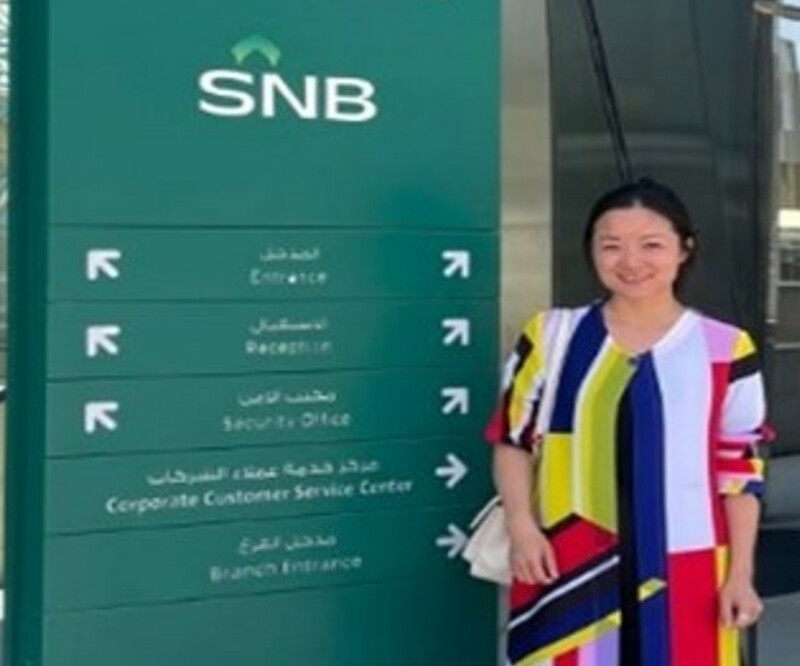 Estimated at 113% of GDP, Saudi’s banking asset penetration is in line with other EM countries such as Poland and Turkey but lower compared to its GCC peers’ 200%+. Although foreign banks are competitive on certain segments (public sector, capital markets and UHNW), local champions dominate the market with Saudi National Bank (SNB, formed after the recent merger of NCB and Samba Financial Group) being the largest by assets, with roughly 25% of loan / deposit market share. Al Rajihi Bank (created in 1957 by Al Rajihi family), being world’s largest Islamic bank by market cap and assets. Prohibited from “sinful investments” in alcohol, tobacco, and gambling sectors, Al Raji Bank’s products are structured to comply with Sharia principles (not charging interests). For instance, in the case of an auto loan, the bank would purchase the car on behalf of the borrower and sell it to the borrower at a price which includes the car’s purchase price plus a capitalized markup. Borrower would then make monthly installment payment which includes principal repayment and markup but not interests. The bank is the leader of retail banking (>30% of m/s), an activity of strong growth (42% of the total loan book for the industry vs. 28% in 2009). It has especially benefited from the vigorous growth of mortgage secor (47% of its retail loan book). As government continues to provide support (subsidized mortgage) to achieve the 70% home ownership target (Vision 2030), mortgage growth could remain strong till the end of next year (30% cagr in 2021-23).
Estimated at 113% of GDP, Saudi’s banking asset penetration is in line with other EM countries such as Poland and Turkey but lower compared to its GCC peers’ 200%+. Although foreign banks are competitive on certain segments (public sector, capital markets and UHNW), local champions dominate the market with Saudi National Bank (SNB, formed after the recent merger of NCB and Samba Financial Group) being the largest by assets, with roughly 25% of loan / deposit market share. Al Rajihi Bank (created in 1957 by Al Rajihi family), being world’s largest Islamic bank by market cap and assets. Prohibited from “sinful investments” in alcohol, tobacco, and gambling sectors, Al Raji Bank’s products are structured to comply with Sharia principles (not charging interests). For instance, in the case of an auto loan, the bank would purchase the car on behalf of the borrower and sell it to the borrower at a price which includes the car’s purchase price plus a capitalized markup. Borrower would then make monthly installment payment which includes principal repayment and markup but not interests. The bank is the leader of retail banking (>30% of m/s), an activity of strong growth (42% of the total loan book for the industry vs. 28% in 2009). It has especially benefited from the vigorous growth of mortgage secor (47% of its retail loan book). As government continues to provide support (subsidized mortgage) to achieve the 70% home ownership target (Vision 2030), mortgage growth could remain strong till the end of next year (30% cagr in 2021-23).
 Although the regulatory has allowed mortgage refinancing, Al Rajhi remains confident. Its loan book could grow “high teens” this year, a target which makes SNB’s outlook (11-13%) looks conservative. However, we think SNB could continue to surprise positively as it did last quarter. Its management is refocusing on growth (from merger integration). The bank’s leading positions in retail banking (#2) and corporate segment (#1) will enable it to benefit from Saudi’s strong macro environment. The beginning of a strong corporate lending upcycle backed by mega/giga projects could especially benefit SNB which is considered as the bank of Saudi government.
Although the regulatory has allowed mortgage refinancing, Al Rajhi remains confident. Its loan book could grow “high teens” this year, a target which makes SNB’s outlook (11-13%) looks conservative. However, we think SNB could continue to surprise positively as it did last quarter. Its management is refocusing on growth (from merger integration). The bank’s leading positions in retail banking (#2) and corporate segment (#1) will enable it to benefit from Saudi’s strong macro environment. The beginning of a strong corporate lending upcycle backed by mega/giga projects could especially benefit SNB which is considered as the bank of Saudi government.
On the funding side, both banks face an increase of costs. Not only the rate hikes are creating some nature pressure on their traditional core funding source (the non-interest-bearing CASA deposits by their customers), the increased exposure to mortgage sector has also led to a growing need for wholesale funding, more expensive but help to reduce the risk on asset/liability mismatch. While Saudi’s “follow-the-Fed” style monetary policy (because of their currency peg) is normally NIM accretive for the banks, Al Rajihi bank is guiding down the expectation (45-55bps of NIM pressure from last year’s 4.1%) because of higher funding cost and retail banking’ competitive price pressure. SNB on the other hand, is confident about its NIM expansion. The bank’s corporate loan book are often variable loans priced at SAIBOR plus, with an average duration for repricing at about 2 quarters. SNB estimates every 25bp rate increase adds 3-5 bp to its NIM (3.0% last year). Its 2022 NIM target is at 3.15%-3.3% based on 5-7 US rate hikes.
Stock focus: ELM (revenue of $1.1bn, market capitalization of $5.3bn)
Established in 1986 as a research company investing in localizing technology, ELM has gradually transformed itself into a leading provider of integrated digital solutions in Saudi Arabia. The company offers administrative and technical consultations, quality control, E-security, and transformation management solutions to both public and private sectors via its 3 business segments: digital business, Professional services (advisory services in data analysis and AI), and Business process outsourcing (BPO). As a government-owned-entity (Public Investment Fund used to own 100% of the company now down to 67% post IPO in Feb 2022), ELM has maintained strong tie to the Saudi public sector, the country’s biggest IT outsourcing spender. It’s the e-government service provider and has developed the highly popular Absher app which allows users to make government appointments, renew passports, driver’s licenses, apply for jobs and Hajj (annual pilgrimage) permits… While Saudi government and its affiliates currently contribute to 50% of ELM’s revenue, the company plans to further develop its private sector-oriented business. While Vision 2030 would lift the overall demand for ICT (information & communication technology) as the Kingdom aims to become the GCC region’s digital hub, private sector, as a winner of economic diversification and reforms (privatization and corporatization) should also increase its investment. ELM management believes every industry has need for digital solutions and BPO services, Bankin industry being the only exception given financial groups’ strong internal capabilities. In this environment, local players (ELM and its competitor Arabian Internet and Communications Services, a spin-off from Saudi Telecom) are better positioned given their market know-how and strong relationship with key accounts. As such, ELM has set a mid-term revenue growth target at 15% per year, a target with room for upward revision should its international expansion turns into a success (won first contract in Iraq). Although ELM doesn’t face inflationary pressure, as is the case for International IT service companies, the development of project business could be dilutive for its margin. The management believes this headwind could be managed as profitability has always been one of the key considerations. We find the company interesting and have added it to our watchlist.
